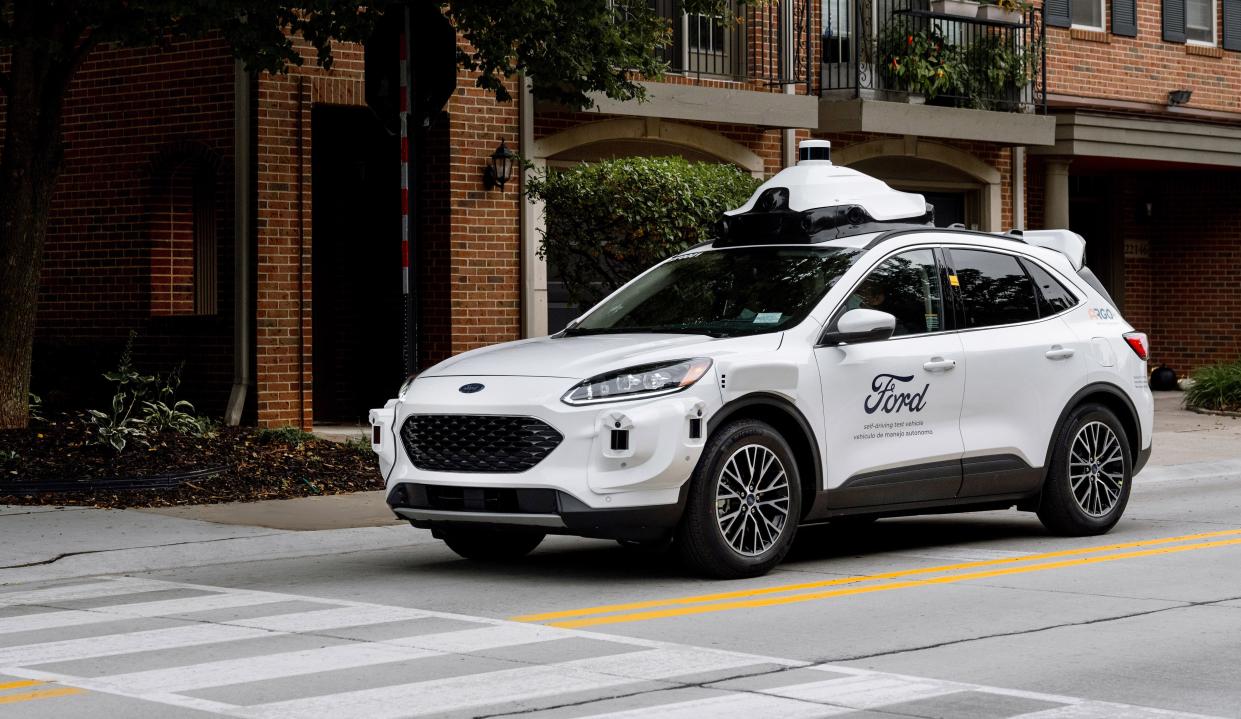You can now take a driverless Lyft in Austin. Here's what you need to know

Planning on taking a Lyft soon? Your next ride in Austin could be driverless.
Ride-hailing company Lyft is now offering riders the option of choosing an autonomous vehicle in some areas of Austin.
When it established a partnership with Ford and Argo last year, Lyft said that it planned to expand its autonomous vehicles to Austin this year. Ford and Argo have been operating in Austin since 2019 to test autonomous vehicle technology, deploying prototypes to establish the city as a proving ground.
Driverless vehicles have been tested in Austin since at least 2015. But Lyft says it is the first ride-hailing service to offer autonomous vehciles for the general public in Austin.
Austin is the third city where Lyft is offering the fully autonomous rides, joining Miami and Las Vegas.
More:More driverless cars are coming to Austin
How do you request an autonomous vehicle?
Lyft says its riders can request an autonomous vehicle ride in the Lyft app, as part of its drop-down menu of different types of vehicles such as Lyft XL or Lux, luxury service. The Lyft app will show the new service option as "self-driving." The company said pricing will be the same as a normal Lyft ride, and all vehicles will be a Ford self-driving car that is powered by Argo AI technology.
For now, the company is operating the self-driving service in defined sectors of the downtown area. The company says it plans to expand the service over time. Any ride taken will still have two Argo employees in the vehicle as safety operators, with the ability to stop the vehicle if needed. When using the autonomous car, riders will be able to unlock doors, start their ride and contact customer support through the Lyft app.
The company declined to share what hours the self-driving vehicles will be operating, and it's not clear how many autonomous vehicles will be available initially. When Lyft announced the program for Austin and Miami, the company said there would be fewer than 100 self-driving cars between the two cities, but declined to share further details .
Last year, when the companies first announced the partnership Ford said it picked Austin for the initial deployment of self-driving vehicles on the Lyft network because the city already had a strong demand for ride-hailing, and the company believed it could have a positive impact on the community.
At the time, Lyft also said in a statement, that the collaboration marks the first time the "pieces of the autonomous vehicle puzzle" have come together to make autonomous rideshare possible.
“Each company brings the scale, knowledge and capability in their area of expertise that is necessary to make autonomous ride-hailing a business reality," Lyft co-founder and CEO Logan Green said in a statement.
More:Tesla sues to sell directly to consumers in Louisiana; could Texas be next?
Are there other driverless vehicles in Austin?
Lyft's will be far from the only autonomous vehicles driving around Austin. Cruise, a San Francisco-based autonomous vehicle company owned by General Motors, has said it plans to offer robo-taxi services in Austin by the end of the year. CEO Kyle Vogt announced the plans in a tweet, and said the service would initially be small in scale, with increased operations to follow next year.
Cruise's fleet is made up of Chevy Bolt electric vehicles that have sensors, cameras, radar and lidar that make it possible to operate autonomously, according to the company. Cruise did not say how many vehicles would be part of the initial rollout. For anyone interested in using the service, the company will be starting a waitlist for people in Austin interested in using the service, similar to what it has done in San Francisco.
Ford and Argo AI have established several partnerships to test autonomous technology in Austin, including with Lyft and also Walmart delivery services.
As of last year, Ford also had a fleet of 30 self-driving Fusions that use Argo AI technology that drive in East Austin, the South Congress area and downtown, including near the University of Texas campus. The company has a team of about 40 employees for its self-driving business operations and testing team, and an autonomous vehicle terminal in East Austin that serves as a base for the fleet and was building a command center near Austin Bergstrom International Airport.
In Texas, autonomous vehicles are regulated under a 2017 law that allows the vehicles to operate without a driver inside. The law says manufacters are considered responsible for any collissions or broken traffic laws. Autonomous vehicles also have to be able to follow traffic laws, have insurance like other cars and be equipped with video recording devices.
Beyond vehicle testing and services, Austin is also home to a number of companies and tech operations that are working on technology for self-driving vehicles. This includes Austin-based tech giant National Instruments, an Austin-based company that makes digital imaging radar technology, and self-driving truck company Torc Robotics, which has an engineering office in Central Texas.
This article originally appeared on Austin American-Statesman: You can now take a driverless Lyft in parts of Austin

